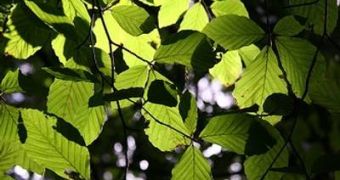The goal of creating artificial photosynthesis systems (as in man-made leaves) has been around ever since solar energy started being looked at as a potent alternative to burning fossil fuels. Miniature forests at the nanoscale have been envisioned and theorized, but researchers at the Leiden University have now brought the dream a bit closer, when they have managed to convert natural chlorophyll so that it closely resembles the highly efficient light antennas that bacteria have.
These antennas are able to give the microorganisms more than enough energy, and have evolved over millions of years to make the most efficient use of the light that hits them. In the course of the study, the experts also managed to gain a better insight into the actual structure of these bacterial light receptors, a find that could help with the development of highly efficient solar cells in the future. The experts even hypothesize that, if the pace of discoveries continues at the intensity it has today, pretty soon we could see roads whose cracks are covered in photo-luminescent dye, capable of converting light into electricity, in a completely sustainable manner.
In a new paper published in this week's online Early Edition of the journal Proceedings of the National Academy of Sciences (PNAS), Leiden University researchers say that chlorosomes, the scientific name for the bacterial light antennas, are the most efficient light-harvesting organs in the world, and that they are specifically adapted to even allow their hosts to survive with minimal amounts of light. They are made entirely out of chlorophyll, so the researchers know that it's key to mimicking their structure perfectly.
“Nanotechnology and supramolecular systems are becoming increasingly important, but it is very difficult to determine their structure. So-called cartoons are frequently made that give a schematic indication of what their structure could be,” Professor Huub de Groot, from the university, says. The researcher and his team managed to accurately identify the detailed molecular and supramolecular structure in self-assembling artificial light antennas that they themselves created, and concluded that their structure was, indeed, very close to that of their natural counterparts.
“We already knew that the light antennae in bacteria form a structure rather like the annual rings of a tree trunk. The molecules in these semi-synthetic antennae seem to stack in a different way; they are flat. But this, too, is one of four ways we had thought in advance were possible,” the expert adds.

 14 DAY TRIAL //
14 DAY TRIAL //